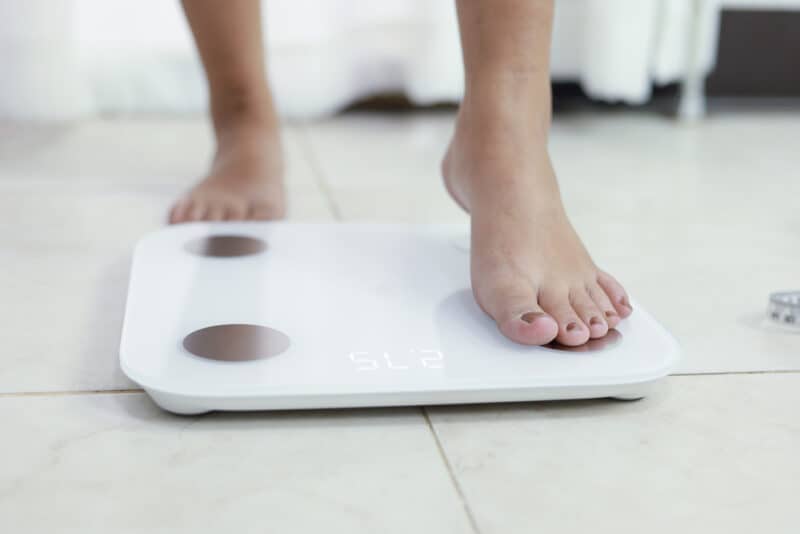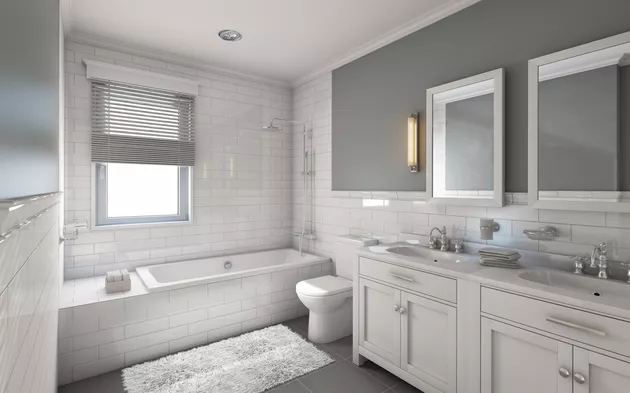How to Calibrate a Digital Bathroom Scale

Bathroom scales have evolved quite a bit since they first appeared as mechanical contraptions a long time ago. Some of the more sophisticated digital scales will now do much more than simply measure your body weight, but they can also determine water ratio, BMI, body fat, and muscle mass. According to Smart Home Bath, some of the newest models can be wirelessly connected and integrated with your smartphone to accomplish fitness tracking, cloud storage, and much more.
Dieters, in particular, prefer digital scales because they provide greater accuracy and have easy to read displays. Prices of digital scales will generally depend on the maximum amount of weight that they can measure. The more inexpensive models will measure weights up to 300 lbs., but there are also some which can accurately measure as high as 500 lbs. Scales that have these very high weight capacities are referred to as bariatric scales. If you’ve been wondering how to calibrate a digital bathroom scale, continue reading below to find the simplest method.
What is a digital bathroom scale?
Manual scales have become infamous for their constantly wobbling readouts, and the occasional difficulty with reading the display. A wobbling display makes it difficult to read your weight, and can often leave you guessing about which weight to choose as the most accurate one. This happens especially when the person being weighed bends over to get a more accurate reading, and that sets off the wobbling and the confusion about your real weight.
It’s much different with digital bathroom scales that are equipped with LCD screens. Digital bathroom scales will have a very clear readout and will generally display accurate weight information up to one tenth of a pound. You’ll generally get a more accurate reading using a digital bathroom scale, as well as a much easier to read display. For these reasons, people have largely replaced their old mechanical scales with digital bathroom scales that are much more in tune with the modern lifestyle.
Before you calibrate
Most digital devices require tools that can calibrate them, so they can consistently provide accurate results to users. The process of calibration actually occurs when you compare values obtained from measuring a specific device with a calibration chart that serves as a standard. If you don’t use calibrated tools, you could definitely get results that are erratic or inconsistent.
All digital scales must go through calibration testing before they’re sold to the public. However, this pre-calibration is only valid for a set period of time, and then the digital scales would have to be recalibrated in order to maintain accuracy.
Recalibration will always become necessary due to the impact of regular handling and usage over some time frame. Once you have calibrated your digital bathroom scales, they should provide accurate results for quite a while, before it becomes necessary to recalibrate again.
Step-by-step calibration guide
According to Miosuperhealth, this step-by-step process provides the best method for how to calibrate a digital bathroom scale:
- Figure out the weight capacity – there is always some kind of standard weight capacity for measuring devices such as bathroom scales. If you have an object in your household with a known specific weight value, you can use that for your calibration testing. Any household items or dead weights will generally have their exact weight values written or etched into them somewhere on the body. You can find out the weight measuring limitation of your digital bathroom scale by reading the owner’s manual, and this will also be a good time to familiarize yourself with the technical attributes of your scale.
- Activate the calibration mode – press the power button, and this will trigger your bathroom scale to prepare for calibration. Most manufacturers recommend that the scale be switched on at least 30 minutes prior to the calibration routine. Press the calibration button on the scale and then move on to the next instruction.
- Run some weight tests – press the calibration button until the LCD on your display shows either 0, 000, or Cal. When the scale readout shows 0, that’s when you should place the object with a known weight value on the scale. To be sure you have the best distribution of weight, put the object at the center of the digital bathroom scale. To confirm your process, add more to the load, so that you see an identifiable increase in weight. You can also remove material from your load and observe a corresponding decrease in weight. Make sure not to exceed the maximum load weight when you’re experimenting with increases in load value. If your digital scale happens to restart during or after this process, don’t worry about it, because there are times when your weight measuring system requires a reboot in order to function properly.
- Step on the scale – if your digital scale doesn’t turn on by itself, you’ll have to wait at least 60 seconds for this to occur. Then you can step on the scale, so as to verify the accuracy of any readings on the display. Assuming that you have an accurate weight reading after the calibration process, you’ll know that the calibration itself was successful. If you get some wildly inaccurate weight results, you should repeat the steps of the calibration. If you still get an inaccurate reading, you may have to take your digital bathroom scale to a technician to see if there is any damage, or if the unit itself is malfunctioning.
When to replace a digital bathroom scale
If you are unable to recalibrate your digital bathroom scale, it might be time to replace it. If you see other signs of gross inaccuracy when attempting to get weight readings, that’s another red flag that tells you it might be time to purchase a new bathroom scale. Generally speaking, the modern digital bathroom scales tend to be quite durable, so if you’re having trouble calibrating, it could very well be that your bathroom scales have been subject to a great deal of wear and tear over the years.
Some of the most obvious signs that you should consider replacing your digital bathroom scale are poor readability of the display area, damage sustained by rust or corrosion, inconsistent readings that don’t seem to make sense, and very different readings when compared to another scale. If you happen to encounter any of these situations, it’s probably time for you to go shopping for a new digital bathroom scale. They aren’t really very expensive, so it won’t be a major investment. And if your household members do like to monitor their weight fairly often, you’ll probably be obliged to purchase a new scale




